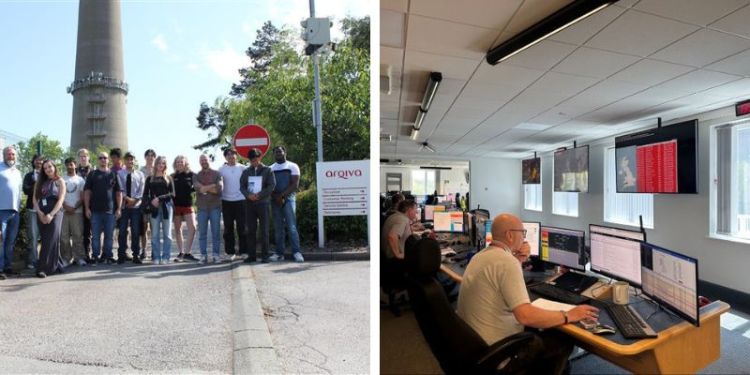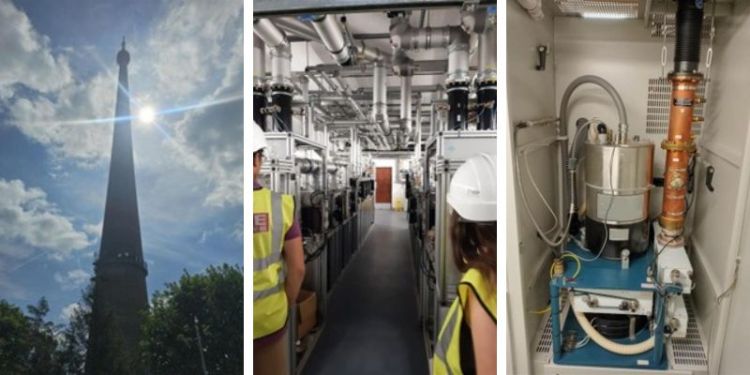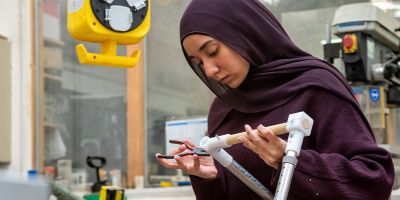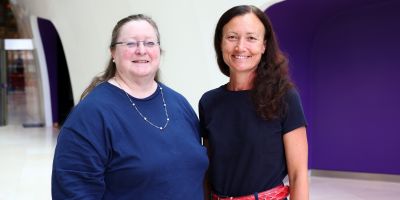Visit to Arquiva’s Emley Moor Transmitting Facility

In June, students from the School of Electronic and Electrical Engineering were given an exclusive behind-the-scenes tour of the Emley Moor Transmitting Station, hosted by Arqiva.
Emley Moor is a cornerstone of the UK’s national broadcast network. Dominating the skyline and visible from many parts of West Yorkshire, the tower has become an iconic landmark. From this prominent site, Arqiva manages the transmission of digital television and radio services across much of northern England. The location also houses a 24/7 Service Management Centre, where engineers monitor and coordinate operations across more than 1,450 sites nationwide.
Richard Knight, Senior Technical Architect (Broadcast Radio), and Joanna Szymik, Graduate Video & Audio Engineer and Leeds alumna, welcomed the students, and together, led a full day of presentations, open discussions, and detailed site tours.
Richard began the day with a fascinating presentation on the history and significance of Emley Moor. He explained that the site started broadcasting in 1956 with a 135 m mast built by the Independent Television Authority (ITA) to deliver services across northern England. As television technology advanced, a much taller 385.5 m guyed steel mast was erected in 1964 to support the introduction of UHF and colour broadcasts. One of the most striking parts of the presentation was his account of the mast’s collapse in 1969, caused by a build-up of ice and wind-induced oscillation. The mast’s collapse led to the construction of the current 330 m reinforced concrete tower, completed in 1971, which remains the tallest freestanding structure in the UK. Richard also detailed the site’s change in ownership through successive privatisations — from the Independent Broadcasting Authority to NTL, then National Grid Wireless, and now Arqiva. He highlighted how the site has evolved beyond television and radio transmission to become a key part of the UK’s smart infrastructure, with Arqiva now using it to support national smart metering communications alongside digital TV, DAB, FM, and AM services.
Following the presentation, students were taken on a tour of the Broadcast Operations Centre, guided by Simon Davies (Head of Service Operations) and Bob Smith (Operations Manager – Media). Here, they observed how engineers monitor live broadcast signals, respond to faults in real time, and ensure seamless coverage.
The tour continued through the transmitter facilities, led by Broadcast Engineer Adrian Parkinson and Regional Manager for Field Operations Craig Kelly. They showed the students the digital terrestrial television (DTT) transmitters, along with the uninterruptible power supplies (UPS) that safeguard continuity of service during power outages. The combiner room followed, where they observed how multiple RF signals are merged and fed into the antenna system for broadcast.
One of the highlights was seeing the Inductive Output Tubes (IOTs), advanced vacuum tubes used to amplify radio frequency signals, enabling broad regional coverage. Students also gained an appreciation of the complex electrical systems that support transmission, including the precision cooling systems — both air and liquid-based — required to keep the infrastructure operational.

L-R: Arqiva Tower (height 330 metres), RF combiners, Inductive Output Tube
The day concluded with a case study presentation, “From Concept to On-Air”, where Joanna and Richard shared the design process behind a new digital audio broadcasting (DAB) system. The project demonstrated how streamlined engineering can reduce hardware needs and improve efficiency in multiplexing audio services from multiple providers.
Following the visit, Joanna Szymik reflected: “It was a wonderful day filled with passion and excitement from Leeds students. I am glad everyone had the opportunity to see the transmission equipment and gained insight into our broadcasting world. It was a real pleasure to host this tour, and I hope they will remember it for a very long time!”
“It was a wonderful day filled with passion and excitement from Leeds students. I am glad everyone had the opportunity to see the transmission equipment and gained insight into our broadcasting world. It was a real pleasure to host this tour, and I hope they will remember it for a very long time!”
Richard Knight concurred, adding: “It was a genuine treat for us to host Leeds University students at Arqiva for the day. You have a cohort of very bright and curious young engineers, and their curiosity came through loud and clear with some very astute questions and observations. I hope everybody enjoyed it as much as we did, and gained some insight into what the future holds as your students make the journey from academia into what I’m certain will be long and interesting careers in engineering. We look forward to strengthening the bond between Arqiva and Leeds University and will stock up on biscuits ready for the next one!”
Dr Tim Amsdon, Deputy Director of Student Education (Taught Programmes) and Associate at the School of Electronic and Electrical Engineering, who organised and attended the visit, said:
“This visit was a fantastic and unique opportunity for students to experience real-world broadcasting infrastructure. It connected their academic learning to national systems that impact millions of people every day. I am grateful to Richard, Joanna and the entire Arqiva team for making this visit possible. I hope to make this visit an annual fixture.”
The visit left students with a greater appreciation for the scale, complexity, and resilience of the UK’s broadcasting systems — and opened their eyes to potential careers in RF engineering, broadcast operations, and communications technology.






